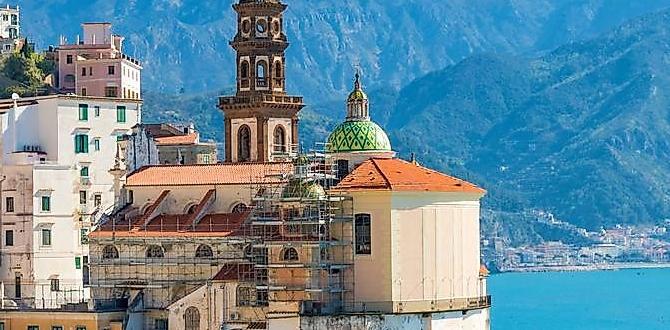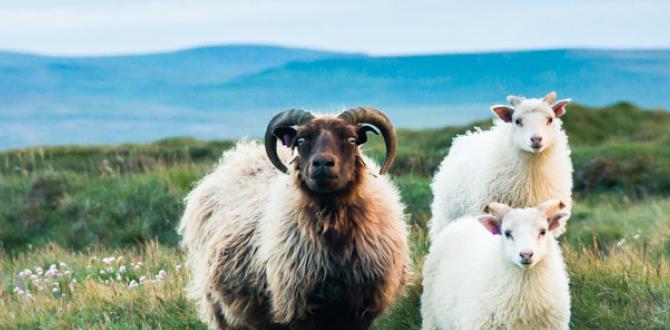Planning a 2-week Arches National Park itinerary is the best way to experience its iconic natural wonders at a relaxed pace. This proven guide offers a balanced mix of must-see sights, hidden gems, and practical tips to ensure a stress-free adventure for families and solo travelers alike.
Visiting Arches National Park is a dream for many, but figuring out how to make the most of your time there can feel overwhelming. With so many incredible formations to see, it’s easy to miss out on hidden gems or feel rushed.
Taking two weeks allows for a deep dive into the park’s magic without the pressure of a tight schedule. Think about packing comfortable walking shoes and maybe some extra layers, just in case! We’re here to guide you step-by-step, turning that planning puzzle into a simple, exciting path to an unforgettable trip. Get ready to explore the breathtaking landscapes of Arches!
Your Ultimate 2 Weeks Arches National Park Itinerary
Two weeks in Arches National Park sounds like a lot, but it’s the perfect amount of time to truly immerse yourself in its otherworldly landscapes. This itinerary balances the iconic must-sees with opportunities for deeper exploration, relaxation, and experiencing Moab’s surrounding beauty.
We’ve designed this guide to be flexible, allowing you to tailor it to your interests and energy levels, ensuring comfort and enjoyment every step of the way. Think of it as a blueprint for an unforgettable adventure, leaving room for spontaneous discoveries and a stress-free pace.
Week 1: Exploring the Heart of Arches and Moab
The first week focuses on getting acquainted with Arches’ most famous areas and the charming town of Moab. This will set a strong foundation for the rest of your visit, hitting the highlights while allowing for acclimatization and easy access to amenities.
Days 1-3: Arrival and Iconic Arches Introduction
Arrive in Moab, the gateway town to Arches National Park. Settle into your accommodation, whether it’s a hotel, vacation rental, or campground. It’s a good idea to stock up on groceries and any essentials you might need, like extra water bottles or comfortable walking socks. Pick up your park pass and familiarize yourself with the park map. You’ll likely need a timed entry permit, so be sure to secure this in advance from NPS.gov/arch.
Day 1: Settle in, get groceries, and enjoy a relaxed evening in Moab. Perhaps a stroll along the Colorado River or a casual dinner.
Day 2: Park Avenue & Balanced Rock
- Morning: Head into Arches. Your first stop can be the Park Avenue viewpoint for a sense of scale. Take the short, paved trail that winds among the massive monoliths – it feels like walking down a city street carved by nature.
- Afternoon: Visit Balanced Rock. This is a very easy, short loop trail that is wheelchair accessible and perfect for getting your first up-close look at a unique formation. Enjoy the educational signs about the geology.
- Late Afternoon: Explore the Windows Section, which includes North Window, South Window, and Turret Arch. The trails here are relatively short with some stairs and uneven terrain, but incredibly rewarding for the views.
Day 3: Delicate Arch Viewpoints
- Morning (Sunrise Option): For the dedicated, a sunrise visit to the Delicate Arch Viewpoint (Lower or Upper) offers a less crowded, magical experience. The Upper Viewpoint involves a moderate hike.
- Mid-day: Visit the Visitor Center to learn more about the park’s geology and history.
- Afternoon: Hike to the Delicate Arch Lower Viewpoint for an easier, accessible view of the iconic arch. The Upper Delicate Arch Viewpoint hike (3 miles roundtrip, moderate difficulty with a significant uphill section and slickrock) is best tackled in the cooler parts of the day or if you’re feeling energetic.
Days 4-6: Devils Garden and Scenic Driving
This section delves into one of the park’s most diverse hiking areas and allows for leisurely drives to soak in the vistas.
Day 4: Devils Garden Primitive Loop
- Dedicate a full day to the Devils Garden area. The main trail offers access to Landscape Arch, one of the longest natural arches in the world.
- For those seeking more adventure, consider hiking further into the Primitive Loop. This trail can be challenging, involving scrambling over rock fins and navigating narrow ledges, but it leads to several other incredible arches like Partition Arch and Navajo Arch. Be prepared with water and navigation aid.
Day 5: Fiery Furnace Hike (Requires Permit or Ranger Tour)
- The Fiery Furnace is a labyrinth of narrow sandstone canyons. Hiking here solo requires a permit and navigation skills.
- Alternatively, book a Ranger-led Fiery Furnace tour in advance. This is highly recommended for beginners as the ranger guides you through the maze safely and shares fascinating insights. It’s an unforgettable experience! Check the Arches NPS website for tour availability and booking.
Day 6: Scenic Drive and Short Hikes
- Take your time driving the main park road. Stop at various pull-offs for photos and short walks. Key spots include Courthouse Towers, the Petrified Forest Petroglyph Panel (a short walk from the road), and the La Sal Mountains viewpoint.
- Consider a leisurely afternoon in Moab. Explore the town’s shops, art galleries, or enjoy a relaxing coffee.
Days 7-8: Southern Part of Arches and Rest
While the northern section is more densely packed with arches, the southern part offers different geological features and a more remote feel.
Day 7: Klondike Bluffs & Tower Arch
- Drive to the Klondike Bluffs trailhead. This area offers fantastic wide-open views and a moderate hike to Tower Arch.
- The hike is about 1.7 miles roundtrip and is less crowded than other popular trails. The scenery is dramatically different, with rugged bluffs and a sense of remoteness.
Day 8: Moab Relaxation and Local Exploration
- This is a good day to relax and recover. Enjoy a leisurely breakfast in Moab.
- Consider a scenic drive along Highway 128, also known as the Upper Colorado River Scenic Byway. It offers stunning views of the river winding through towering red rock canyons. You can stop at viewpoints or picnic areas.
- If you’re feeling up for it, visit Fisher Towers, a short drive off Highway 128, for impressive sandstone spires.
Week 2: Deeper Dives and Surrounding Adventures
Week two allows you to revisit favorite spots, explore lesser-known trails, and discover the wonders beyond Arches National Park, making for a truly comprehensive Utah experience. This is also a great time to incorporate activities that might be more physically demanding or require more time, ensuring you don’t feel rushed.
Days 9-11: Canyonlands National Park and Dead Horse Point State Park
No trip to the Moab area is complete without exploring the vastness of Canyonlands National Park and the breathtaking vistas at Dead Horse Point. These parks offer a different perspective on the desert landscape.
Day 9: Canyonlands National Park – Island in the Sky District
- Drive to the Island in the Sky district of Canyonlands (about a 45-minute drive from Moab). This mesa-top district offers panoramic views of the Colorado and Green Rivers from above.
- Visit Mesa Arch for an iconic shot (especially beautiful at sunrise). This is a short, easy hike.
- Explore Grand View Point for sweeping vistas and the White Rim Overlook trail.
- Consider the short hike to Upheaval Dome.
- Note: Canyonlands has multiple districts (Island in the Sky, The Needles, The Maze) that are very far apart and require separate planning. Island in the Sky is the most accessible and popular for day trips. Check Canyonlands NPS for current conditions and information.
Day 10: Dead Horse Point State Park
- Visit Dead Horse Point State Park, located near Canyonlands. It’s famous for its stunning overlook of a gooseneck bend in the Colorado River, often compared to Horseshoe Bend in Arizona.
- The park offers viewpoints, short walking trails, and opportunities for photography. It’s a very accessible and rewarding visit.
- Consider packing a picnic to enjoy with the incredible views.
Day 11: Moab Adventure Day (Your Choice!)
- Based on your interests and energy levels, choose an adventure:
- Jeep Tour: Moab is famous for its off-road tours. Book a guided jeep tour for an exhilarating experience exploring rugged backcountry roads.
- Rafting/Kayaking: Enjoy a scenic float trip or a more adventurous whitewater rafting excursion on the Colorado River.
- Mountain Biking: Rent a bike and hit some of Moab’s world-renowned mountain biking trails (many are beginner-friendly, like the Moab Canyon Pathway).
- Canyoneering: For the adventurous, guided canyoneering tours offer a unique way to explore slot canyons.
Days 12-14: Revisits, Hidden Gems, and Departure
The final days are for revisiting favorite spots, discovering places you missed, and preparing for your departure.
Day 12: Revisiting Favorites or Exploring Less-Trafficked Areas
- Did you fall in love with Delicate Arch at a different time of day? Go back!
- Explore some of the shorter, less-hyped trails you might have missed, like the Salt Valley Overlook or the short spur to False Kiva (requires a walk off an unpaved road, research conditions).
- Spend more time enjoying the Visitor Center exhibits or attending a ranger program.
Day 13: Scenic Drive & Star Gazing
- Take another drive along the Arches Scenic Drive, perhaps stopping at viewpoints you skipped earlier.
- Arches is an International Dark Sky Park. Dedicate an evening for incredible stargazing. Find a pull-off away from artificial lights and marvel at the Milky Way. If you have a comfortable reclining chair, this is the perfect time to use it!
Day 14: Departure
- Enjoy a final Moab breakfast.
- Depending on your flight schedule or drive home, you might have time for one last scenic overlook or souvenir shopping.
- Depart from Moab, full of incredible memories.
Essential Planning Tips for Your Arches Trip
Smart planning ensures your trip to Arches is smooth and enjoyable. Beyond the itinerary itself, consider these crucial tips that make a real difference, especially when traveling with family or managing personal comfort needs.
Accommodation Options
Moab offers a wide range of choices:
- Hotels and Motels: Plenty of options in Moab town, ranging from budget-friendly to more upscale. Book well in advance, especially during peak season.
- Vacation Rentals (Airbnb, VRBO): Great for families or groups needing more space and kitchen facilities.
- Campgrounds: Inside Arches National Park (e.g., Devils Garden Campground), reservations are essential and often book up months ahead. Moab also has numerous private and BLM (Bureau of Land Management) campgrounds nearby.
Packing Essentials for Comfort and Convenience
Beyond standard hiking gear, here are some things to consider:
- Water, Water, Water: Carry more than you think you’ll need. Dehydration is a serious risk. Consider a hydration pack or multiple reusable water bottles.
- Sun Protection: Broad-brimmed hats, sunglasses, high SPF sunscreen, and lip balm are non-negotiable.
- Layers of Clothing: Desert temperatures can fluctuate dramatically from day to night and with elevation changes. Pack breathable, moisture-wicking layers.
- Sturdy Footwear: Broken-in hiking boots or shoes with good traction are crucial for uneven terrain.
- Snacks: Pack high-energy, non-perishable snacks like trail mix, energy bars, and dried fruit.
- First-Aid Kit: Include essentials for blisters, cuts, scrapes, and pain relief.
- Personal Comfort Items: For individuals who may need them, packing adult diapers or child diapers can significantly enhance comfort and confidence during long days of exploration, travel, or unexpected delays. Brands focused
Frequently Asked Questions
What is the best time of year to visit Arches National Park?
The shoulder seasons, spring (April-May) and fall (September-October), offer the most pleasant weather for exploring Arches. Temperatures are mild, making hiking comfortable. Summer can be extremely hot, while winter can bring snow and icy conditions to trails.
Do I need a timed entry permit for Arches National Park?
Yes, during peak season (typically April through October), Arches National Park requires a timed entry reservation to manage crowds. It’s crucial to book this well in advance through Recreation.gov, as same-day reservations are very limited or not available.
What are the most popular arches in the park?
Delicate Arch is undoubtedly the most famous. Other highly visited arches include Landscape Arch, Double Arch, Balanced Rock, and the Windows Section (North Window, South Window, and Turret Arch).
How much hiking is involved in seeing the arches?
Hiking can range from short, easy strolls to strenuous backcountry treks. Many iconic arches are accessible via relatively short trails (under 3 miles roundtrip), like Balanced Rock and the Windows Section. Popular hikes like Delicate Arch and Devils Garden involve more moderate effort.
Is Arches National Park suitable for families with young children?
Yes, Arches is very family-friendly. Many trails are short and relatively flat, making them manageable for little legs. Consider bringing a comfortable child carrier for longer hikes. Stroller-friendly options exist, like the paved path to Balanced Rock.
What should I pack for a trip to Arches?
Essential items include plenty of water, sunscreen, a wide-brimmed hat, sunglasses, sturdy hiking shoes, layers of clothing, snacks, and a first-aid kit. For extended trips or specific needs, consider packing personal care items like adult or child diapers for added comfort and confidence, especially during long days of exploration or travel to and from the park.
How can I avoid crowds at Arches National Park?
Visiting during the shoulder seasons or weekdays can reduce crowds. Entering the park early in the morning (before 8 AM) or later in the afternoon (after 3 PM) can also help. Utilize the shuttle system if available, or consider hiking less popular trails.



